As Hari Raya Aidilfitri is celebrated with joy and togetherness, families and friends gather to mark this momentous occasion, often greeted by the iconic shimmering lights of lampu cucul adorning the walls of homes.
The origins of this festive illumination can be traced back to the soft, flickering glow of flames that once lit up the night, guiding residents and casting a celebratory aura over communities in preparation for Hari Raya Aidilfitri.
This guiding light was the pelita, a traditional oil lamp that has long symbolised warmth, celebration and cultural heritage.
Though its presence has diminished in modern times, the pelita remains an enduring symbol of tradition, especially in rural areas where its craftsmanship and significance continue to be treasured and passed down through generations.
Pelita has long played a vital role in welcoming the festive season. These simple yet effective oil lamps have been lit in homes, along roadsides, and throughout villages, creating an enchanting ambience that has marked the arrival of Hari Raya Aidilfitri for generations.
Beyond their aesthetic charm, the pelita served as a crucial source of light in times when electricity was scarce, enabling late-night prayers, celebrations and gatherings to unfold under the open sky.
While modern electric lamps dominate today’s landscape, I had the privilege of meeting a local craftsman and handyman, Sabri bin Abdullah @ Saba Anak Mana, who is dedicated to preserving the tradition of pelita at his modest home in Lumut.
“Crafting a pelita is more than just a simple light source that brightens up the night, but also symbolises and marks an important annual occasion that is the Hari Raya Aidilfitri celebrations.”
The crafting of a traditional pelita is in itself an art form that has been passed down through generations, which begins with selecting the right type of bamboo that is both sturdy and hollow enough to hold the oil and wick. “One of the most crucial first steps [in making a traditional pelita] is the find the right bamboo, as they must not only be mature enough but also strong enough to be made into a pelita, as they will need to withstand the heat and the natural elements.”
He also added that the bamboo should not be too large as it can be unwieldy to handle not only during the crafting process but also generally in setting up and lighting the pelita.
The bamboo is then cut into appropriate lengths before small holes are carefully drilled into the upper portion to house the wick mechanism, which is traditionally a small metal coil or holder that is inserted into the holes drilled previously, along with a cotton wick.
Once the wick is properly secured, kerosene is carefully poured into the hollowed bamboo, serving as the fuel source that allows the lamp to burn for several days.
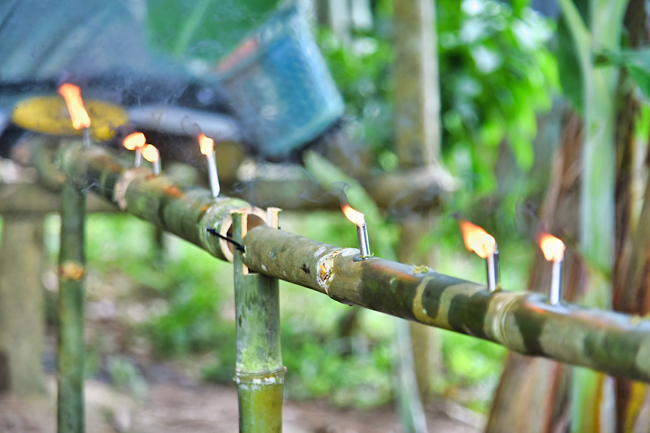
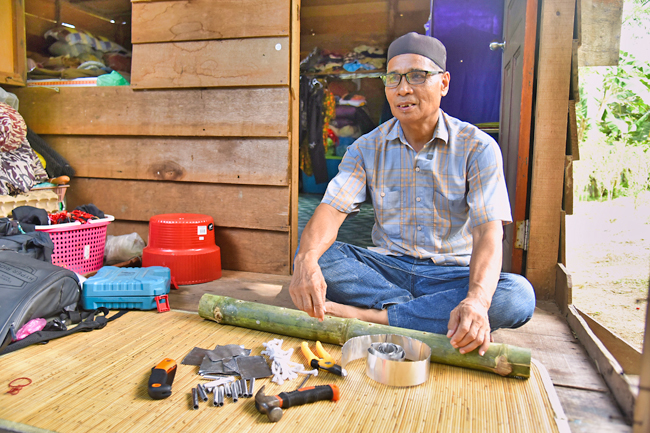
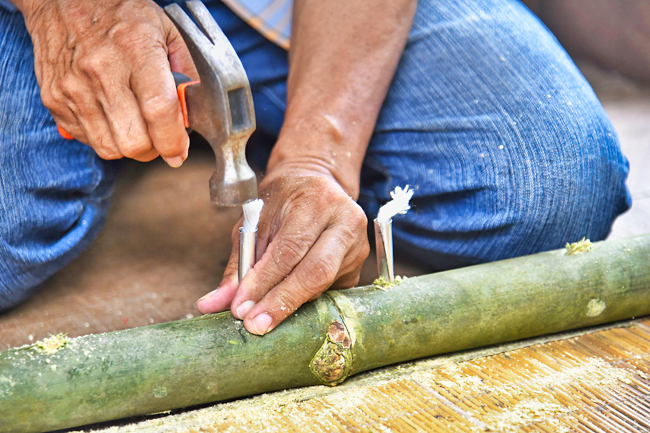
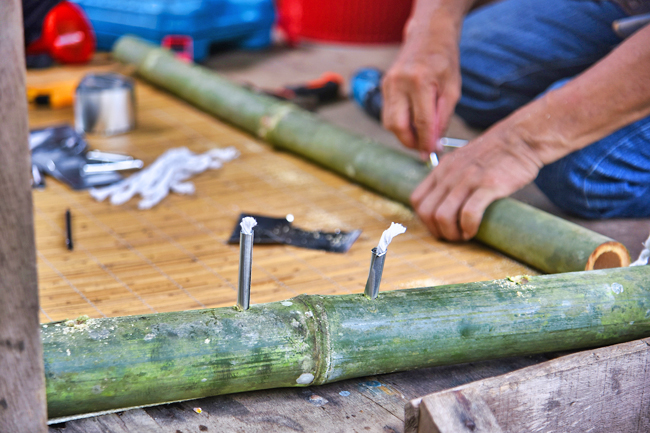
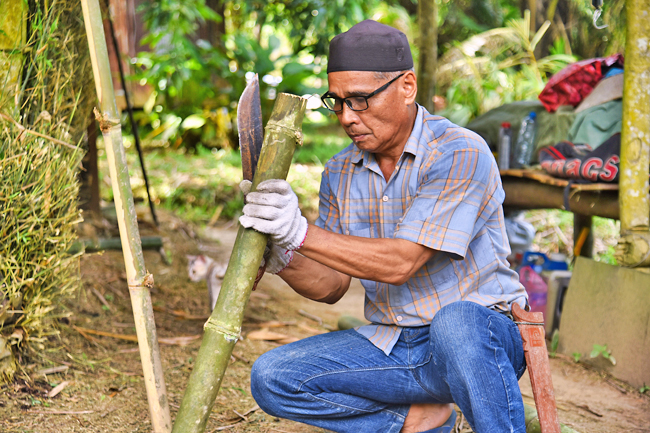
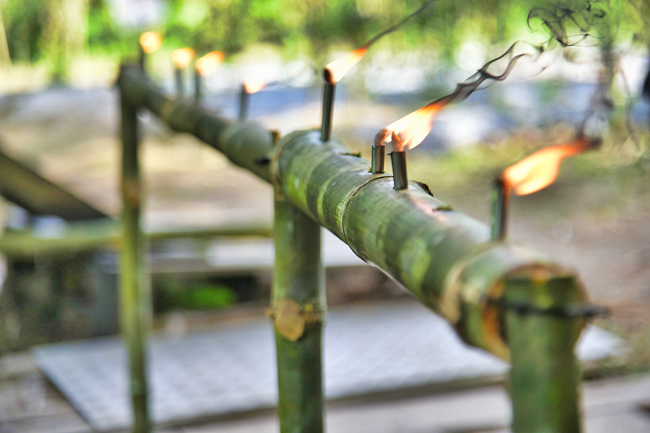
He also explained that making these traditional pelita used to be time-consuming, though with the use of tools such as drills, he can confidently make a traditional pelita in around 15 minutes after having scouted the right bamboo for the job.
“While a lit pelita can last for days, when careful planning in choosing the right bamboo along with diligent maintenance, these traditional pelita can last for a year,” he added.
These long-lasting light sources in the form of pelita represent not only a symbolic act of ushering in the joyous occasion of Hari Raya but also bring along the warm golden glow that creates a nostalgic and communal atmosphere as families and neighbours band together in the spirit of unity and festivity.
While pelita once stood as an essential part of Hari Raya preparations, the tradition has waned over the years as the advent of modern, safer and cost-effective alternatives, such as electric lamps and LED lights, has made traditional oil lamps less common nowadays.
These modern options also eliminate the risk of fire hazards posed by open flames and require less maintenance, making them a practical choice for contemporary households.
Despite these conveniences, Sabri noted that traditional pelita still plays a prevalent role in lighting up the night sky during festive seasons such as the Hari Raya Aidilfitri.
“Compared to modern electronic-based pelita which embraces convenience and ease of use, it can be easy to overlook these traditional pelita as not only does it have a certain nostalgia and feel, it is also essential in areas where these modern conveniences are not available such as in rural village areas.”
In addition, he noted that the craftsmanship that goes into creating traditional pelita can also help to generate alternative sources of income, as finished pelita can be sold to people looking for ways to experience the flickering soft amber lights of pelita, especially for the younger generations who have embraced modern technologies.
“For me, I think making and crafting pelita is something that should be at the very foundation of a village as residents, families, and friends get together to make the lights that brighten up the village at night.”
As the glow of pelita continues to flicker in the hearts of those who cherish tradition, its light serves as a reminder that cultural heritage, no matter how old, still holds a place in the present.
Whether through nostalgia or an appreciation for craftsmanship, the pelita remains a symbol of light, guidance and celebration of the Hari Raya Aidilfitri. – Daniel Lim


